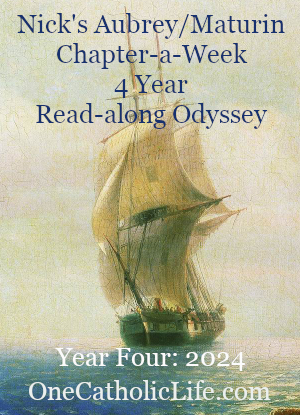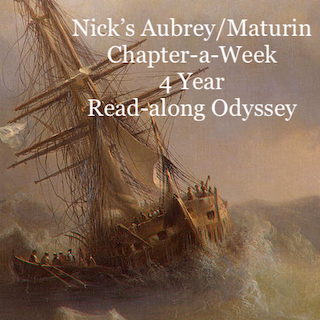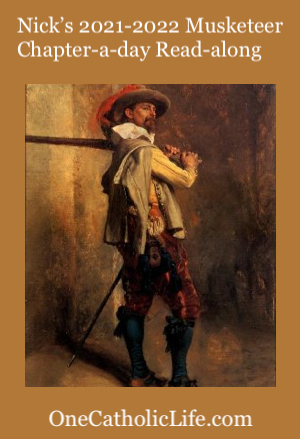Into the Cloud: Homily for the Ascension

On this Solemnity of the Ascension,
the Scriptures describe Jesus as being lifted up into the cloud.
We hear a lot about “the cloud” these days.
We can put our documents in the cloud.
Or we can keep our pictures in the cloud.
We can even put our music and books in the cloud.
It’s really convenient having our music or all of our books
at our fingertips.
But for many of us,
switching to the cloud can be a difficult transition.
We’ve probably got file cabinets
full of folders that contain important legal documents.
Maybe we have boxes of CDs, or cassette tapes, or even records.
We’ve also got shelves full of photo albums or cases full of books.
Putting items like these in the cloud is a bit scary
and hard to get used to.
Where do they all go? Are they secure?
Plus, we like the idea of having the concrete items to hold on to.
We like the way they feel and to see them organized on a shelf.
There’s a security in being able
to physically flip through an album of pictures
or hold a book in our hands
rather than looking at them on a tablet or e-reader.
The disciples are facing a similar problem in the first reading today.
As they were looking on,
Jesus “was lifted up, and a cloud took him from their sight.”
Jesus has moved to “the cloud.”
He is no longer physically with his disciples on earth.
They stand there “looking intently at the sky” as he ascends to the cloud.
They would like him to stay on earth, in the flesh,
rather than vanish within the cloud.
Like those of us who would rather feel the pages of a paper book
or see our photos in a leather-bound album,
the disciples would rather be able to see Jesus,
to place a hand on his shoulder,
to speak directly to him.
And I suspect many of us feel the same way.
It’s hard to place our faith in a person we can’t see or hear or touch.
Maybe we would have liked it better if Jesus had not ascended,
but stayed on earth with us.
What if that would have happened instead?
What if Jesus had simply continued living on earth
for all these centuries?
Maybe he’d have continued living near Jerusalem
for a few decades more,
and then maybe he’d have gone on to Africa, or China.
After that he could have made his way through Russia
to Europe and then the Americas.
He could have traveled all over
and been seen by millions of people in the flesh.
But there would have been many more who could not have seen him.
Billions of people who lacked the money or the time
to travel to where Jesus was.
Even if Jesus was alive today
in this era of planes, trains, and automobiles,
even with Skype or FaceTime,
there would still be people who could not get to Jesus:
the poor, the homebound, those in war zones, or in prison.
And even if Jesus went to visit them, he couldn’t get to everybody.
And that’s where the cloud can help us understand.
When we keep our documents and photos and music and books
in the cloud,
they’re available to us everywhere:
on our desktop computers, our laptops, our tablets, our e-readers,
and even on our smart phones.
We can share them with others with the simple click of a button.
Though it seems like our documents, our pictures, our music, our books,
are nowhere,
they’re really everywhere.
In a similar way,
though it seems like Jesus is nowhere,
he is really everywhere.
All because he was lifted up to the cloud.
The cloud is an ancient image for the presence and glory of God.
For instance, when God called Moses up to Mt. Sinai
to receive the tablets of the law
a cloud covered the mountain for six days,
and then God called to Moses from the midst of the cloud.
And on the Exodus journey,
God’s presence and glory among the chosen people
were seen in the pillar of cloud by day
and the pillar of fire by night.
Later, God instructed Moses to set up a tabernacle in the tent of meeting
and after Moses did all that he had been instructed to do,
a “cloud covered the tent of meeting,
and the glory of the Lord filled the tabernacle.”
And even in the gospels,
when Luke describes the Transfiguration,
the disciples see Jesus, Moses, and Elijah
conversing on the mountaintop
and then they see a cloud cast a shadow over them,
and from within the cloud they hear,
“This is my chosen Son; listen to him.”
A cloud is almost always mentioned when God makes his glory visible.
This is the cloud into which God lifts Jesus up.
Jesus in his humanity enters into the glory of God
so that everyone can be close to God forever.
Through our baptism in Christ, we, too, are close to God forever.
Because God wanted to come close to us,
he sent his Son to be one of us, to be a human being.
After Jesus’ suffering and death,
God raised him from the dead,
and brought him into the cloud of his presence and glory.
We who have been baptized
into Christ’s suffering, death, and resurrection
are also baptized into Christ’s Ascension.
The more we live out our baptism, the closer we are to Christ,
the closer we are God.
When Jesus disappeared into the cloud,
he didn’t just dissolve into thin air.
He is still here with us,
but in a new way, a way no one had ever seen before.
Though at first it seems like Jesus is nowhere, he is really everywhere.
He left the world one day in order to be available
to all people throughout all time.
He can be encountered on every continent, in every city,
in the homes of both the poor and the wealthy,
by both the saint and the sinner,
at any time.
The documents, photos, music, and books
that are available everywhere once they enter the cloud
are a reminder to us that Jesus is available everywhere
since he entered the cloud of the Father’s glory.
Christ is here with us now.
He never leaves our side.
God loves us so much,
he is not content with simply being in one place at one time.
He is with us in all places, at all times.
That is something worth celebrating here at Mass!
That is something worth coming here to sing about!
That is something worth telling people about!
That’s why we hear in today’s gospel that after Jesus was taken up,
the disciples “went forth and preached everywhere,
while the Lord worked with them.”
That’s what we’re being asked to do, too,
to be witnesses for Christ, to preach the gospel.
It’s something we’re already very good at.
We love telling people about things that are good for them, don’t we?
That’s why we post our favorite outfits to Pinterest.
Or share our favorite recipes on Facebook,
or our favorite music.
That’s why videos go viral and why we click the “Like” button so often.
Those are all ways of preaching, of being witnesses.
We preach all the time on social media,
we preach all the time by word of mouth.
We tell people about the deal we got at the store,
or our favorite places to eat.
What was the last thing I recommended to someone?
Did I tell them about a great movie I just watched?
Did I mention a book I just finished,
or a TV show I just binge watched on Netflix?
We know how to preach
because we do it all the time.
When was the last time I recommended a prayer I discovered?
When did I retweet something Pope Francis put on Twitter?
Have I told anyone about a retreat I made that really made a difference,
or a passage from scripture that I just can’t get out of my head?
What kind of music is playing on the car stereo
when I drive to Mass and back?
These are all opportunities to preach.
This is what Christ is asking us to do:
to be his witnesses;
to tell everyone the good news that He is with them,
that God loves them.
On this Ascension day we remember
that Christ was lifted up into the cloud
not to leave us,
but to be with us forever.
We may or may not ever become comfortable
with putting our documents, photographs, music, or books in the cloud.
But the next time we stream music to our phones,
or download an ebook, or share our photos online with friends,
we can remember that Jesus, too is with us no matter where we are.
And we can be witnesses of his presence to the people we love.
Podcast: Play in new window | Download
Subscribe: RSS































